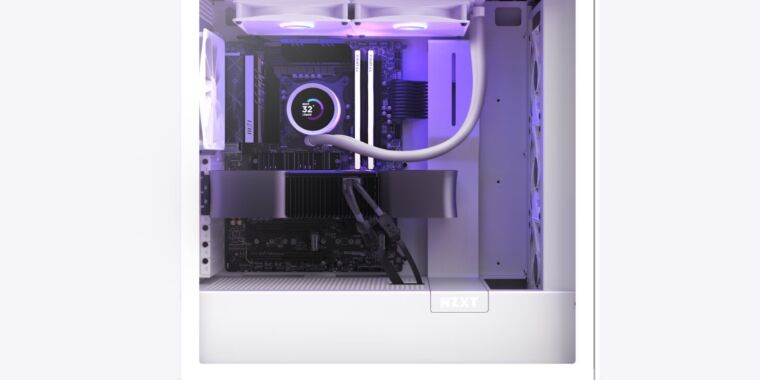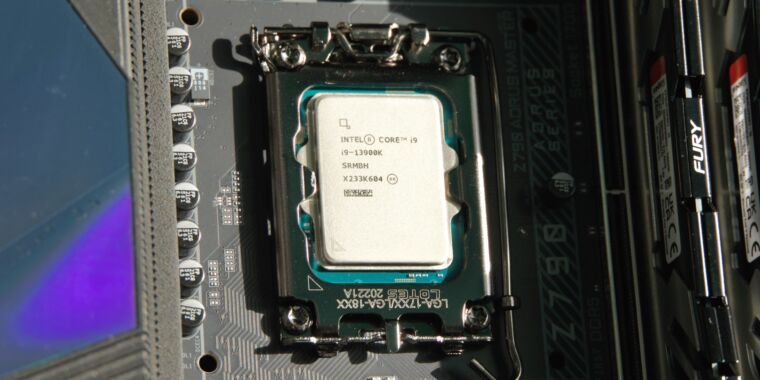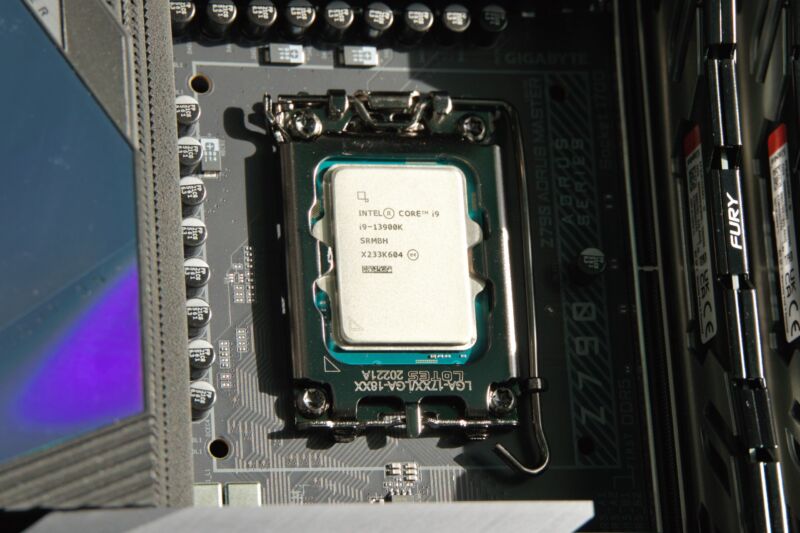NZXT wants you to pay up to $169/month to rent a gaming PC
Why own when you can… rent? —
NZXT Flex subscription has “new or like-new” PCs, one-time $50 shipping fee.

Enlarge / NZXT’s subscription program charges $169/month for this build.
NZXT, which sells gaming PCs, components, and peripherals, has a subscription program that charges a monthly fee to rent one of its gaming desktops. Subscribers don’t own the computers and receive an upgraded rental system every two years.
NZXT’s Flex program subscription prices range from $49 to $169 per month, depending on the specs of the system, as you can see below:

Enlarge / The footnote is: “Specs of PCs subject to change based on availability.”
NZXT
There’s also a one-time setup and shipping fee for the rentals that totals $50. NZXT says it will “likely” charge subscribers a separate fee if they return the rental without the original box and packaging (NZXT hasn’t disclosed how much).
The systems received, per NZXT’s website, will be “new or like-new.” Users may get refurbished systems and should check their rental for any defects, per subscription agreement terms from Fragile, which helps manage the subscription service.
NZXT says subscribers get 24/7 customer support with their subscription. The Irvine, California-headquartered company also says that there are no cancellation fees, and subscribers get a prepaid return label with their rental system. As noted by The Verge, NZXT started promoting Flex as early as February; it’s unclear how much interest it has garnered.
Per the subscription agreement, users can be charged the full retail value of the system if it’s returned damaged or altered (self-upgrades/repairs have limits) and monthly interest rates of 8 percent if they stop paying the monthly fee for over 60 days.
Who’s this for?
In an announcement Wednesday, NZXT looked to frame Flex as a way to make PC gaming more accessible and highlighted use cases where it thinks rental PCs make sense.
In a shared statement, the CEO of esports team FlyQuest suggested there’s a place for rental PCs in esports, which often relies on expensive gear delivered through sponsorships. In a statement, Brian Anderson said: “New hardware is being released frequently, and having access to industry-leading products is vital to staying competitive. NZXT Flex provides us with the confidence that we’ll always have access to the top-of-the-line builds so that we can create content and play at our highest level for our fans.”
The announcement also highlights a supposed customer who said the program let them immediately get a gaming PC that they can’t afford. The program also targets people who only need a high-end PC for a short period or who want easy biennial upgrades.
But for most, rental PCs don’t make much fiscal sense long-term, as monthly fees add up over time. For example, the cheapest plan would cost $758 the first year (including the setup/shipping fee), which is more than various prebuilt gaming PCs and DIY builds.
Subscribers also don’t own the computer. They can get an upgraded system after two years, but in that time, they will have spent $1,466 to $4,106 for hardware that they don’t own. Meanwhile, $1,466 to $4,106 could fetch a quality PC that you could own and continue getting value from beyond two years.
Flex also competes with PC rental programs from companies like Rent-A-Center and Aaron’s that let people rent to own. A few months ago, an NZXT representative confirmed via Reddit that Flex isn’t a rent-to-own program. The rep said that computer buyouts could be allowed but that only a portion of rental payments would apply to the purchase.
Those seeking immediate PC gaming gratification with limited funds also have options in payment plans/financing, used systems, and cloud gaming—all of which have drawbacks but let you compute and play games with hardware that you own.
Recently, more tech brands have been showing interest in trying to draw subscription dollars from consumer gadgets that typically only net a one-time profit. HP, for example, has a printer rental program where you pay to use a printer that you don’t own and that HP tracks. Logitech CEO Hanneke Faber also recently discussed interest in selling a “forever mouse” that people would own but requires a subscription to receive ongoing software updates.
NZXT wants you to pay up to $169/month to rent a gaming PC Read More »


